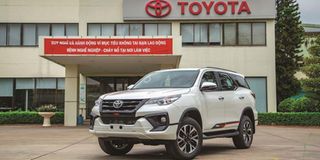Reflections on Japan’s efficient auto industry

Toyota Fortuner TRD 2019 car.
The dominance of Japan in the global auto market is legendary. On Kenyan roads, you can safely bet that out of every 10 vehicles, seven are Japanese. In fact, there may be more Japanese cars in Kenya than in Japan itself!
This is no accident. Japanese brands have built their reputation on reliability and safety, earning strong global recognition.
A lot can be learned from this success story. Japan’s deliberate focus on research and its emphasis on sciences have kept it at the forefront of innovation. The education system is geared toward self-discovery, encouraging learners to solve problems, not just diagnose them. This practical, goal-oriented approach begins early and defines their national ethos.
Ironically, Japan lacks the natural resources that fuel its massive auto industry. Key inputs such as iron ore, rubber, and steel are largely imported. Yet, through a robust global supply chain and meticulous assembly, the final product earns the prestigious label: “Made in Japan.” This demonstrates the power of systems thinking and global integration.
Electric vehicles
During my recent visit to Japan for the Expo 2025 in Osaka, I observed something striking. The high-end Japanese models that dominate Kenyan roads—Lexus, Prado, and VX—are scarcely seen on Japanese roads. Instead, small, functional, often electric vehicles are the norm.One wonders if some luxury brands were designed purely to feed the ‘drum major’ syndrome abroad.
The lessons extend beyond industry into culture and upbringing. At a fun marathon event in Osaka, I met a father who brought his son, 7, to run. The boy tripped and fell. Though the father helped him up, the boy finished the race with a bruised knee and unshaken determination—an early lesson in grit and goal-setting.
Kenyan world champion runners have a huge following in Japan. Vivian Cheruiyot, Abel Kirui and the late Samuel Wanjiru et al. are household names.
They present a mystery the Japanese cannot decode. Using them as brand ambassadors in this market would be a winning combination.
Respect for authority and elders is ingrained in the culture. Bowing is a national practice, even for the flag. Patriotism runs deep in Japan, reinforced by education, ceremony, and daily interactions. It has paid off with stability and prosperity.
This national pride also reflects in language. Japanese is the default language in nearly all settings. At restaurants, sign language became my fallback. It’s a powerful statement: language is not a barrier to development. Bukusu and Gikuyu can be just as much languages of prosperity as English. No apologies.
There is strong demand for Kenyan exports such as coffee, tea, and nuts in Japan. However, one major concern is the need for customised, high-quality packaging, with Japanese-language branding to ease consumer acceptance.
Japanese language learning
To support this, the Ministry of Investments, Trade and Industry will work with academic institutions to expand Japanese language learning, especially at the tertiary level.
This is a strategic move to bridge the communication gap and deepen trade relations.
Kenya faces the challenges of a youthful population, while Japan grapples with an aging one. With a shrinking labour force and a huge manufacturing base, Japan presents real opportunities for skilled Kenyan youth.
This opens the door to collaborative partnerships and people-centered exchange programs.
The world is a vast marketplace brimming with opportunities. But to tap into them, accurate and timely market intelligence is key.
Mr Kinyanjui is the Cabinet Secretary for Investments, Trade and Industry.


